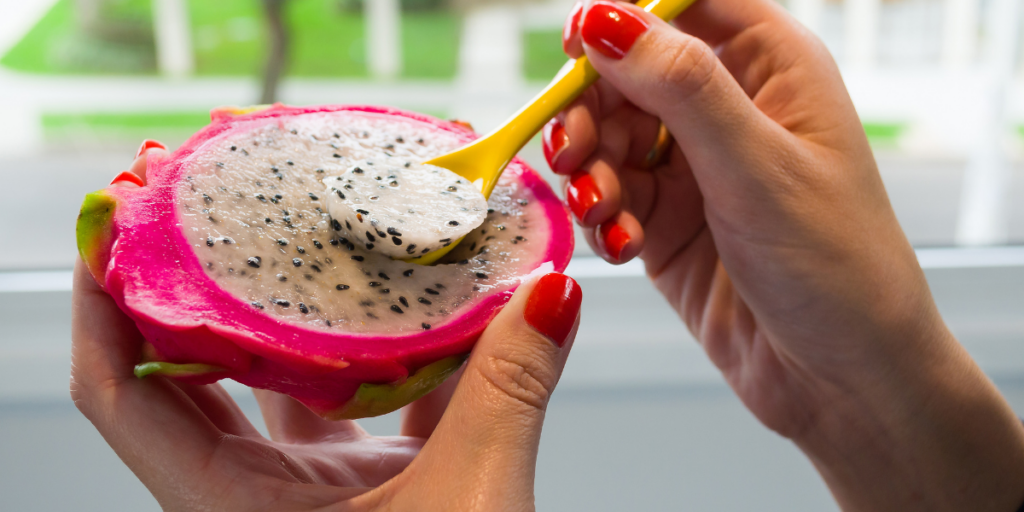No products in the cart.
Pitaya: Amazing Benefits and Nutrition

If you’ve gone to a coffee or smoothie shop recently, you may have seen signs for the newest “superfruit” – pitaya. While it may seem that this allegedly incredibly healthy fruit has come out of nowhere, that’s probably because it’s more commonly known as dragon fruit.
What is Pitaya?
There are several different varieties of pitaya, hailing primarily from Central America and Asia, and they vary greatly in color and taste. The variety gaining so much notoriety recently is the red-skinned, red-fleshed kind called Hylocereus costaricensis, which primarily comes from Central America. Interestingly, pitaya comes from a cactus plant and only blooms at night.
This unfamiliar fruit is often compared to a kiwi, as they have similar textures due to their small, crunchy seeds within the sweet flesh. The seeds are dispersed throughout the fruit and are nearly impossible to remove, which is fine because they do add a little bit of monounsaturated fat. It should be noted that while edible, the seeds do not digest particularly well.
Pitaya can be eaten fresh or dried and is very low-calorie, having only about 10 calories per 100g serving (though some fruits are more than half again that size). It’s marketed as the “low-sugar, high-fiber superfruit” but in reality, fresh pitaya contains less than a gram of fiber and about the same amount of protein. Eating the fruit dried or including the skin can help boost the fiber content to about 10g per serving.
As far as vitamins and minerals go, pitaya is a good source of calcium, vitamin C, and iron, however percentages of daily recommended intake vary greatly depending on the source. The fruit does contain a variety of antioxidants that prevent damage to skin and organs and help ward off other medical conditions. Of particular interest is betanin, which is the compound responsible for the fruit’s natural red coloring. The African Journal of Biotechnology published a study in 2010 that used betanin in an antioxidant analysis and found pitaya to be a significant source, suggesting further analysis be done into this valuable crop that could have great benefits for both consumers and the pharmaceutical industry.
An interesting note is that a secondary use for pitaya may be as a non-chemical red food colorant, as the betanin will add color without changing the flavor of foods as do the strong flavor of similarly colored beets. Overall, this fruit will make an excellent addition to add some variety to your current diet rich in fruits, vegetables, lean proteins, and healthy fats, but should not completely replace any of the healthy foods that you’re currently eating.
Sources: http://en.wikipedia.org/wiki/Pitaya/ http://pitayaplus.com/what-is-pitaya-plus/ http://www.livestrong.com/article/408466-dragonfruit-nutritional-information/ http://www.livestrong.com/article/160520-benefits-of-dragon-fruit/ http://www.academicjournals.org/ajb/PDF/pdf2010/8Mar/Rebecca%20et%20al.pdf
